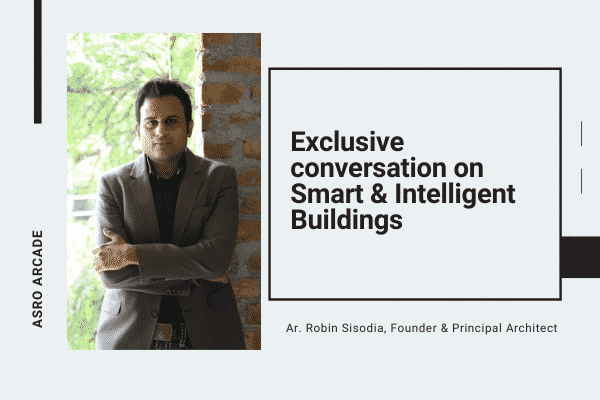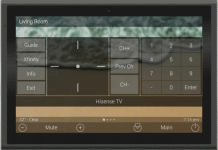
Smart buildings are a long-term investment, that incorporates technology to share information about what goes on in the building systems to optimize the building’s performance. This shared information is then used to automate various processes from heating, ventilation to security. Though the initial payment for a smart building is high, such investments pay off in the long run. The building’s overall asset value keeps on increasing because the technology keeps on getting updated. There is minimal need for human intervention these days. “If a building is well-maintained and taken care of, then the investment will prove to be highly profitable in the long run. Data collection will also prove to be easy”, says Ar. Robin Sisodia, Founder & Principal Architect, ASRO Arcade, Gurugram. “Moreover, as this technology needs minimal human intervention, any malfunction will be updated quickly”, he adds.
Integration of technology into buildings helps to make the occupants more productive. From air quality, sanitation to security, all are delivered at an optimum level to enable a better occupant lifestyle. With the help of sensors and cameras, precise data is given on improved space utilization with the building generating living intelligence automatically. Smart buildings also offer potential savings on everyday expenditure by identifying underutilized resources and potential growth opportunity of unused spaces.
How do you think technology is shaping people’s lifestyles through smart buildings?
The main motive behind the concept of smart buildings is to avoid unnecessary wastage of resources while improving cost and energy efficiency.
A smart building links the core systems of water meters, pumps, fire alarms, power, lighting. Sensors play an important role in collecting information about resource allocation. Building automation allows monitoring the adjustments that control conditions across an entire building. With the information gathered and analyzed, systems are put in place to provide information on where people might be at certain times of day or areas with high traffic. Smart buildings generate a high volume of data that can be used for their use.
What are the challenges you face while integrating a building management system or redesigning a normal building into a smart one?
Of course, with technology, a margin of error needs to be kept in mind as all systems are not foolproof. But as architects, it is our job to ensure that everything goes on smoothly. From the get-go, the first challenge that comes up is while choosing the right systems. These systems have to be perfectly meeting the needs of the concept created. So, by identifying the business objectives, budget, and goal of the project, an adequate system is chosen that meets its requirements.
Moving on, often there are some hitches when dealing with the development of a programmable platform. Important functional systems dealing with plumbing, electricity and mechanics need to be standalone without integration (being IP-enabled). However, there is no mixing or intermingling of data as the protocols used to communicate are proprietary. Each system is efficient when it comes to personal data collection. It falters in sharing of the data.
Planning is crucial to allow different systems to talk to each other so that they can integrate data from multiple sources into a cohesive, singular, and centralized platform which supports building operations. Also, the building industry has specializations – each section of the industry independently keeps on developing. With the advent of smart buildings, the integration of independent sections is the need of the hour. This allows systems and devices to communicate more efficiently.
What are the latest innovations in the smart-building segment?
Homes that can adapt to the needs of the owner are mention-worthy. Clever AI will be able to track the needs and the habits of the resident to present a comfortable home. A smart bathroom is a perfect solution for anyone looking to control and customize the shower experience. One can control the minutest of all the details – from the water temperature to the depth of the water in the tub without having to fuss over the details.
A great new tech system that is observable in interconnected homes for families is that they install mesh Wi-Fi systems. This is very innovative. You can share Wi-Fi networks, data, and systems with a simple click. The transition between different Wi-Fi networks will also be seamless.
What according to you is the most important factor to consider while
planning for an Intelligent building?
Most buildings and homes that are constructed and designed in the 21st century, have some element of “intelligence.” It consists of HVAC systems, lighting controls, and elevator controls. But if a client wants to truly push the boundaries of technology in today’s day and age, it is relatively easy to come across tailor-made technologies for their needs. But when it comes to planning for an intelligent building, it all depends on the client. For example, a client might not want to have a home system set up – they can easily buy an Alexa or a Google Home to meet those same demands at a fraction of the price. Another instance is when a client is extremely private. It will be quite easy for an outsider to access their data so an AI system that collects data to predict their user patterns might not be the best option for them.
What are the contributions of smart buildings to the environment?
One of the most advantageous points about constructing a smart building is that it drastically cuts down on energy consumption. So in commercial buildings and offices, rooms that are not in use will automatically switch off the lights. This motion-sensing lighting system works great in homes as well. This innovation has already been adopted by many technologically advanced East Asian nations like Japan and South Korea. Their emission reports have shown a huge difference in their energy consumption due to the installation of automatic lighting systems. A smart building can further work wonderfully on alternate sources of energy. A building with solar panels installed wouldn’t need to rely on traditional sources of electricity. This also promotes efficient use of energy, cutting down costs on electricity and water bills.
Do Smart Buildings increase productivity at work?
Of course, smart buildings will be able to increase productivity. They create a much healthier, comfortable, and cosier place for employees to work in. This applies to offices as well as homes. Homes are adopting such technologies as an increasing number of people are switching over to working from home. Every aspect of life is taken care of – there is temperature control, light control and anticipatory functions of the AI which allows a person to focus solely on their work. Plus, the sleek designs make working a breeze due to the improved aesthetics.
How do you foresee the growth of the smart-buildings-sector 5-8 years down the line?
There is a lot of scope in the growth of the smart building sector. With the advent of 5G technology, the world will be even more connected. Local governments of small towns will also be pushed toward smarter alternatives and connectivity. I expect that more cities in India will start striving to be smart cities. There will be an increased number of collaborations and partnerships with other governments which will set India on a much more technologically advanced path.















